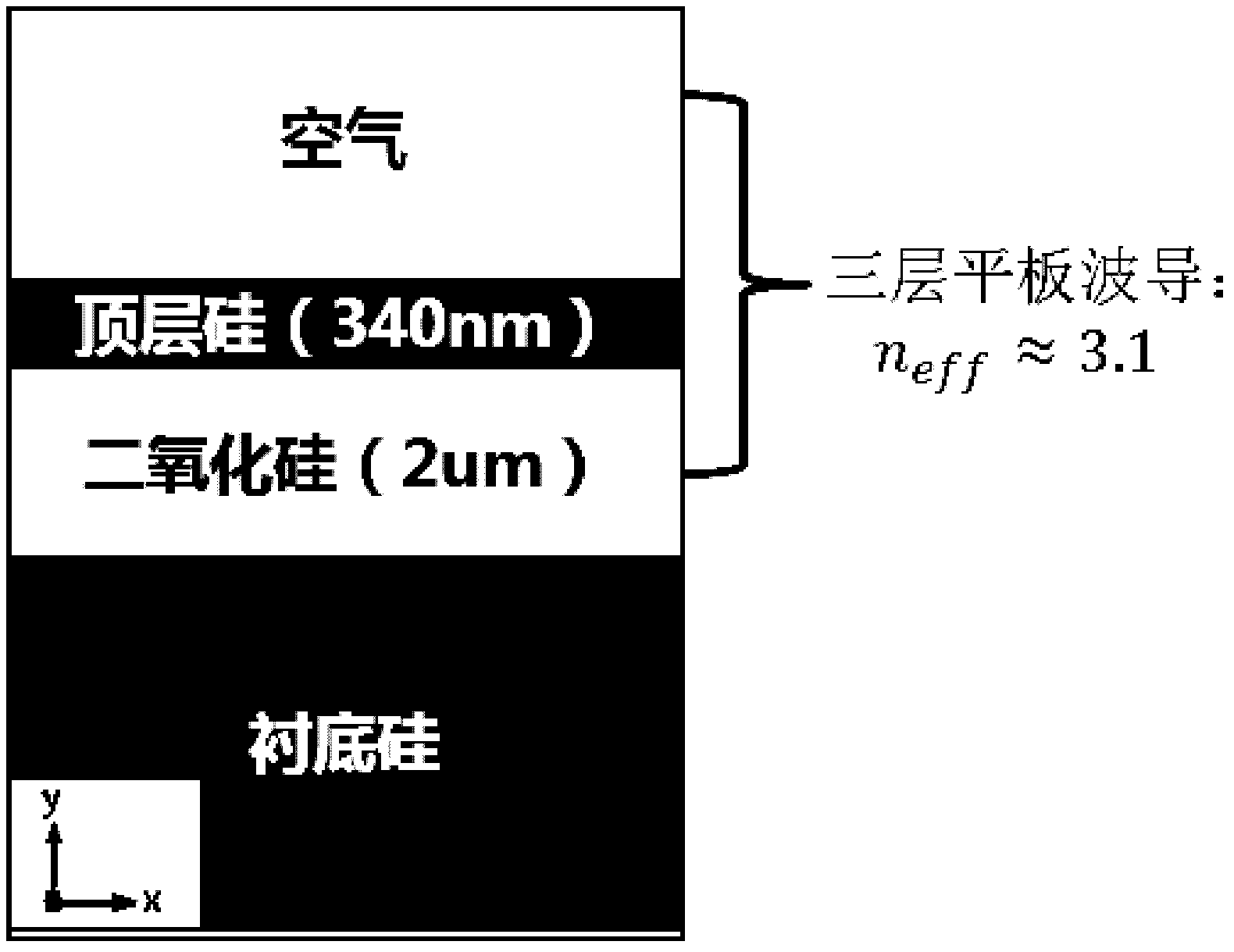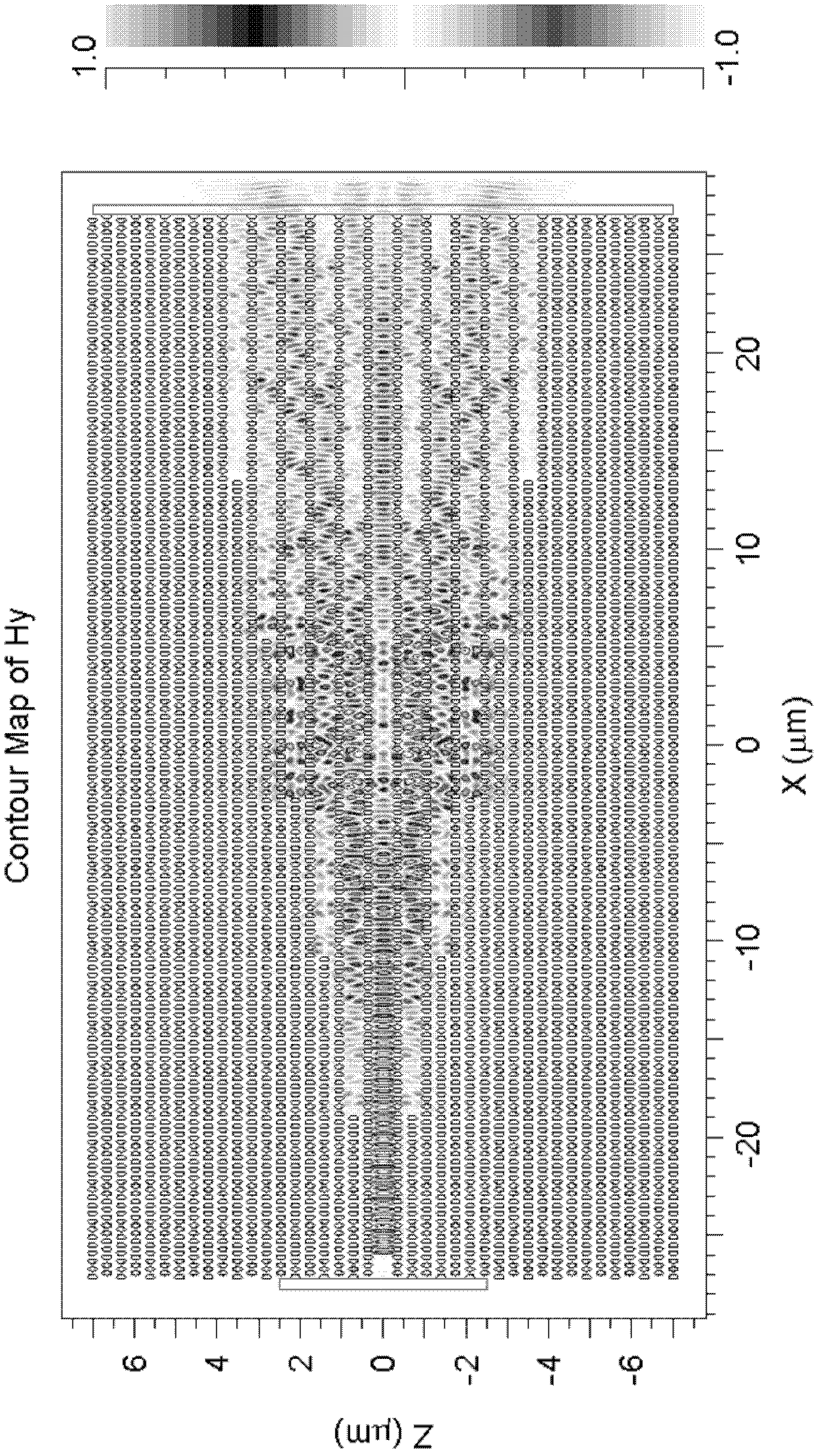Photonic crystal-based integratable quantum walking device
A technology of photonic crystals and quantum walks, applied in optical components, light guides, optics, etc., can solve problems such as slow light effects, affecting light field coupling and interference, differences, etc., to achieve optimized device design, simple and clear relationships, and beneficial to photons integrated effect
- Summary
- Abstract
- Description
- Claims
- Application Information
AI Technical Summary
Problems solved by technology
Method used
Image
Examples
Embodiment 1
[0032] (a) in FIGS. 2 to 5 shows the structure of a photonic crystal quantum walker coupled waveguide array in the present invention. As shown in (a) of Figures 2-5, the photonic crystal has a hexagonal lattice air hole structure, the dark part in the figure is the air hole, and the light part is silicon. In a photonic crystal with a complete lattice, every other row or several rows of air holes is removed to form a coupled waveguide array. The distance between the photonic crystal waveguides obtained in this way is small, and light can be coupled between adjacent waveguides.
[0033] Figure 2(a) , 3(a) The length of the photonic crystal waveguide is gradual, the photonic crystal period is 405 nanometers, and the air hole radius is 0.28×photonic crystal period. In the figure, AB is the input waveguide with a certain length, and the coupling region (C) also has a certain length. It should be noted that there are no special requirements for the length of the input waveguide,...
Embodiment 2
[0046] Fig. 6(a) and Fig. 7(a) show the structure of another quantum walking device—coupling microcavity array. use figure 1 In the three-layer flat plate structure, the hexagonal lattice air hole photonic crystal period is 420 nm, and the air hole radius is 0.32×photonic crystal period. The input waveguide AB is a special Γ-M waveguide, which is convenient to match with the microcavity array to reduce reflection. In a photonic crystal with a complete lattice, the coupled microcavity array can be obtained by removing the air holes one by one according to a certain lattice rule, in which each air hole corresponds to a point in the lattice. Figure 6(a) and 7(a) The lattice used in the structure is formed by the arrangement of equilateral triangles according to two different rules. Figure 6(a) and 7(a) The size of the overall device is 16×13.8um in turn 2 and 25.6×10.9um 2 , are on the order of tens of microns.
[0047] Again, the selected photonic crystal period, the si...
PUM
 Login to View More
Login to View More Abstract
Description
Claims
Application Information
 Login to View More
Login to View More - R&D
- Intellectual Property
- Life Sciences
- Materials
- Tech Scout
- Unparalleled Data Quality
- Higher Quality Content
- 60% Fewer Hallucinations
Browse by: Latest US Patents, China's latest patents, Technical Efficacy Thesaurus, Application Domain, Technology Topic, Popular Technical Reports.
© 2025 PatSnap. All rights reserved.Legal|Privacy policy|Modern Slavery Act Transparency Statement|Sitemap|About US| Contact US: help@patsnap.com



